Weapons of the Second World. Large-caliber aviation machine guns
This is an expected decision and quite understandable. Although, of course, the machine gun was rather average in essence, and not very reliable. However, that is, that is: it was very progressive weapon.
But today we will start talking about serious weapons. On machine guns of large calibers. About those who were in the teeth to even crush an armored car.
In general, it is difficult to draw a clear line in terms of caliber. Well, the 12,7-mm is a machine gun. 20-mm is a gun. What about 15 mm? Where does the German creation MG.151 go?
The gun can shoot projectiles, that is, carrying the fuse and explosive charge. But sorry, Breda-SAFAT 12,7-mm is quite normal to shoot exactly 12,7-mm projectiles, each of which contained almost a gram of explosives!
Complicated.
But nevertheless, let's go to the table, on which lies a huge pile of these awesome structures. There are already more participants, and there is also something to talk about.
The heavy machine gun was the first to be assembled and used by the Germans. And even in the First World War. It was an anti-tank machine gun MG 18 TuF - Tank und Flieger Maschinengewehr. If you translate it thoughtfully: a machine gun for (well, it’s clear that it’s against) tank and aircraft, that is, anti-tank and anti-aircraft machine gun.
It was a conventional MG 08, but beefy under the chuck 13,25 × 92 mm. 50-gram cucumber confidently break through the distance to 800 m 22 millimeter of the then armor.
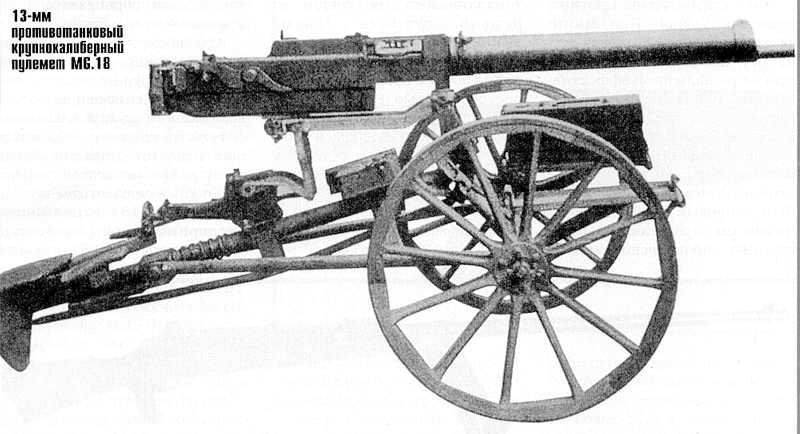
But 50 units of all of them were released, Germany lost the war, and they forgot about the machine gun. Until a certain time.
But then came the moment when rifle bullets funfully drummed on the armored carcasses of 40's aircraft, causing cackles on the one hand and righteous anger on the other. In Pokryshkin's well-written, he tried to pick U-88 with ShKAS ...
The designers realized that they need to change something. And so it began ...
1. Breda-SAFAT, Italy
In the past, we briefly talked about the 7,7-mm machine gun of this bikaliber family. Criticizing. So, that machine gun was GOOD! We will not say the same about its large-caliber fellow.
If the 7,7-mm rifle cartridge for muzzle energy was not very different from any other classmates, then the choice of ammunition by the Italians would perplex anyone, not that non-experts.
British cartridge 0.50 from "Vickers". Very weak cartridge. I can even say the weakest in the world. Why Mussolini, who was in charge of armaments, rejected Hochiss's heavier French patron, we can only guess. But the French patron was one and a half times heavier and had more acceptable characteristics. Perhaps this is the case in the eternal Franco-Italian confrontation.
The only plus in the Breda machine gun was the presence of explosive cartridges prohibited by an international treaty, whose 37-gram shells contained 0,8 grams of pentrite.
By the way, in some sources the “Breda-SAFAT” 12,7-mm machine guns are presented almost like a copy of Browning. It is difficult to say why people are doing this, but the fact is that although in the guise of machine guns there are some common features, the Brad machine gun was very, very far from the creation of Browning.
Breda-SAFAT was inferior to Browning in absolutely all characteristics. The Italian cartridge 12,7x81SR is expectedly less powerful than the American 12,7x99. And this entailed a decrease in the muzzle energy, the sighting range, and even the Italian machine gun was not very quick-fire. And in the synchronous execution, the machine gun fire rate dropped from 700 to 450-550 rounds per minute, which was no good at all.
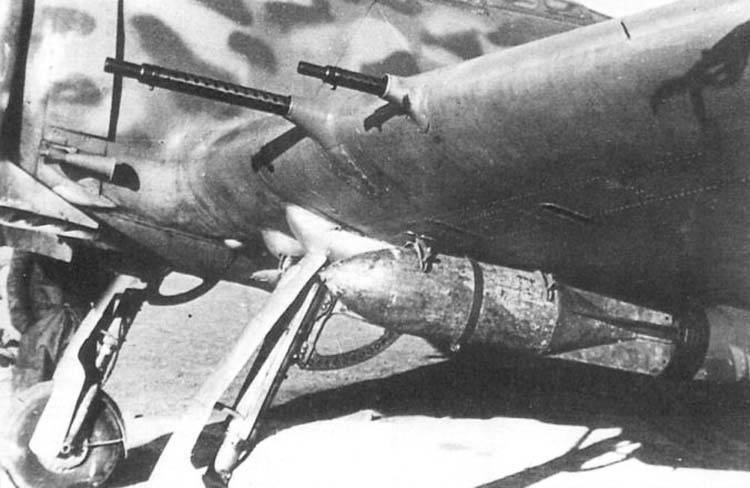
But since there were no other machine guns (Scotty's product does not count), the “Breda-SAFAT” was put on everything that took off under the Italian sign. With the expected unintelligible outcome.
Advantages: reliable.
Disadvantages: rate of fire, frankly weak cartridge with low ballistics.
2. Ho-103 (101,102,104). Japan
With heavy machine guns for Japanese aircraft generally occurred historical joke. The Japanese Air Force, having entered the war in China, immediately thought about the fact that weapons should be strengthened. And since everything was very bad in terms of development on their own in Japan in those years, the imperial military bowed to the allies.

The Japanese would like to purchase a license for the latest German machine gun MG.131, but received a complete refusal. The Germans did not dare to take such a step, being somewhat confused. First, Germany in 1939-40 had complete love and understanding with the USSR. The necessary strategic materials flowed from the Soviet Union.
At the same time, the USSR gave Japan a cold shower on Hassan and Khalkhin Gol. And Japan was not so cool supplier. Therefore, in the end, pragmatic Germans decided not to quarrel with Stalin ahead of time, selling some kind of machine gun to the Japanese.
As a result, the Japanese Air Force was left without a large-caliber machine gun at all, and this problem could be solved only by 1941. But how ... In China, a pretty decent amount of American Browning M1921 machine guns was tattered.
The Japanese in the best traditions just copied a machine gun (not the worst, yes), without bothering about the license at all. But in order not to quarrel with the United States finally and irrevocably, the machine gun was sharpened under ... the Italian cartridge 12,7х81SR!
The one with a burst chuck.
As a result, in 1941, adopted by the Japanese army (emphasize) aviation the excellent large-caliber machine gun No-103 was adopted, which fully satisfied the needs of the air force, both in offensive and defensive weapons.
The machine gun turned out lightweight, compact, reliable and rapid-fire (in the wing or turret version). There were disadvantages. Like all Browning machine guns, he barely succumbed to synchronization, sagging in rate of fire. Plus a weaker Italian cartridge.
But the main disadvantage was that the machine gun synchronized with the motor on certain engine operating modes reduced the rate of fire from the declared 900 rpm to 400! But over time, having rebelled, the pilots of the Nakajima Ki-43 fighters (which the No-103 first went to) took advantage of the engine modes that did not lower the rate of fire.
Practically all Japanese military fighter jets were armed with several of these machine guns, both in synchronous and in wing versions. But the Japanese gunsmiths could not defeat the fall in the rate of fire.
Advantages: reliability.
Disadvantages: low rate of fire in the synchronous version.
3. Type 3 fleet. Japan
Probably, it is surprising to see another Japanese machine gun, but alas, that’s how they had fun. The army is in itself, naval aviation is itself a queen.
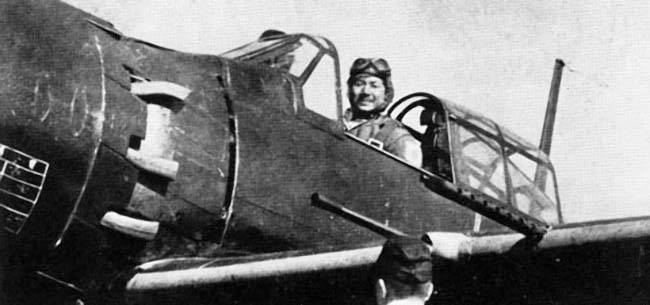
We are returning to China again, where, having fought in 1939, those who fought, that is, naval aviation, became thoughtful. Generally, at naval pilots' problems drew up earlier than anyone else. The A6M, the main fighter, seemed to be good, but the two Type 92 machine guns, which were essentially a reworking of the very ancient Lewis, were downright depressing.
And for deck dive bombers and torpedo bombers, the only “Type 92” on the turret in general could be considered a purely psychological weapon.
And there were also claims to the gun, but this is not about them. Here, in 1940, the Japanese naval commanders began to think about a large-caliber machine gun for their pilots as a variant of intermediate weapons.
Then the Japanese turned again to the allies, that is, to Germany. And here begins the continuation of the anecdote with MG.131. Yes. Land forces were refused. And the sea - no !!!
Representatives of the naval aviation appealed to the Germans with a request for a machine gun at the very beginning of 1941, when in Germany everything was already set in places, and the war with the USSR was a matter of resolution. And formal reasons for refusal simply did not exist.
And by the end of 1941, not only documentation was supplied to Japan, but also the necessary equipment for the production of machine guns.
The Japanese military were, on the one hand, in complete ecstasy, on the other - it would be worth thinking about. THREE large-caliber machine guns of different systems with THREE types of cartridges - is that, you know ...
But nevertheless, the machine gun "Type 2" played a role in improving the defense capability of Japanese naval aviation, and a significant role. But it was a prelude to the main theme, the machine gun "Type 3". However, I already wrote about this.
However, the Japanese invented the FOURTH machine gun!
They became "Type 3". This time the Browning AN / М2, already mentioned by us, was copied, but under the French patron of Hotchiss 13,2x99 mm!
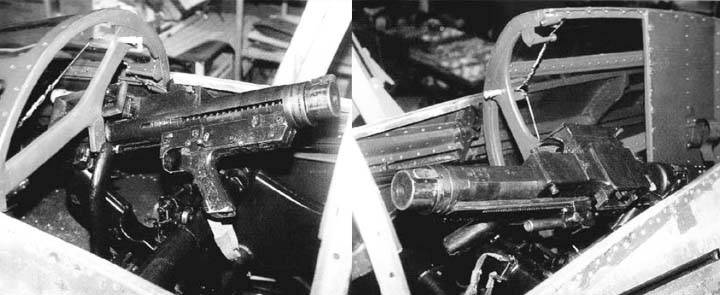
The only more or less distinct explanation is that the Japanese wanted a more powerful weapon. The bullet of the 13,2X99 cartridge mm was pretty heavier than the German 13-mm bullet.
The machine-gun impromptu turned out to be a success, the aircraft of the Japanese Air Force of the ground forces were armed with “Browning” with an Italian patron, and the naval Air Force with “French Browning” with the French.
Advantages: reliability, powerful cartridge.
Disadvantages: weight, low rate of fire.
4. MG-131. Germany
In 1938, the Rhine Metall presented the MG.131 heavy machine gun. Caliber 13-mm, model 1, so in accordance with the accepted system of notation.
The machine gun was supposed to replace MG.15 and MG.17, and, in all respects, in the turret, wing and synchronous versions. But the development of a little nodged, and the machine gun was adopted only in the 1941 year.
The machine gun immediately interested the allies of Germany, because it had many positive features in the design. MG.131 turned out to be a very compact and light weapon, in fact, it could be compared in weight with rifle caliber machine guns. Small sizes again allowed to install it without problems anywhere. The machine gun had an electropneumatic recharge and electric descent.
It is clear that for these things had to pay. The weakest point of the machine gun was ... cartridge! 13x64B was frankly weak. Light bullet with honestly say, not the most successful form, could not provide decent ballistics. Not very impressive and the initial speed of the bullet.
All this made the machine gun is not a very dangerous weapon. If we compare it with our Berezin or American Browning, they worked quite normally at distances up to 600 meters, while the German after 300 meters was practically useless because the bullet lost energy more than 7 times the shooting was just pointless.
However, reliability and rate of fire compensated for the shortcomings, as they could, and until the end of the war MG.131 carried out service as the main medium-caliber aviation weapons, being installed on all German aircraft from the 1942 of the year.
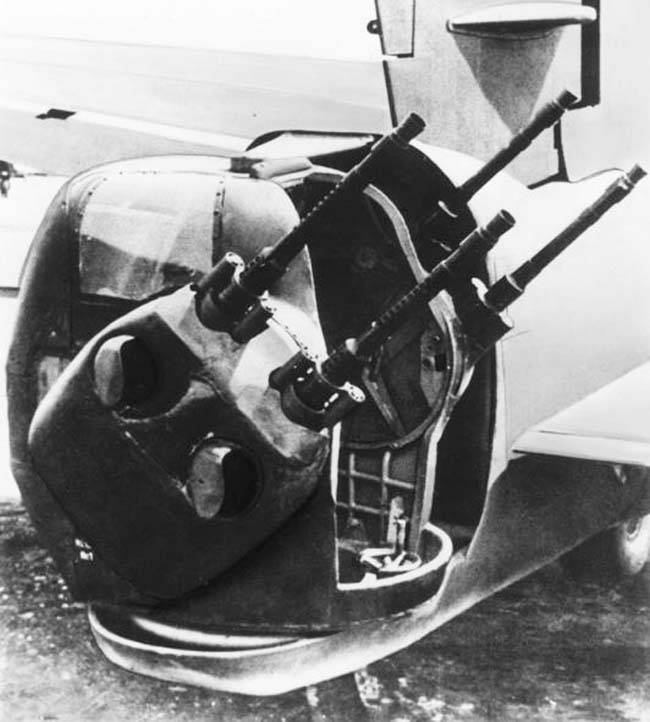
Despite the shortcomings voiced, MG.131 turned out to be quite an effective weapon and was popular. Moreover, in the ground forces they gladly used this machine gun, replacing the electric trigger with the usual firing mechanism.
Advantages: weight, reliability, rate of fire.
Disadvantages: disgusting ballistics weak cartridge.
5. Hotchkiss Mle.1930. France
Not to mention the French. In the end, it was precisely the Hochkiss machine gun that first flew into the sky as an aviation fixed-mounted machine gun. And this happened on February 11 1914.
In general, the light and compact "Gochkiss" were put on airplanes by all who had access to them. And those who did not have machine guns, tried to get and make copies.
In the middle of the 30-s in France, they also came to the conclusion about the need for large-caliber machine guns. “Hotchiss” was quite suitable as a weapon that could be installed, for example, in the collapse of the cylinder of the Hispano-Suiz engines for firing through a screw bush. The guns, as it were, have not yet figured out normal.
In 1937, the machine gun turned out. Immediately in all guises, turret, wing, it was possible to install in the camber of the cylinders. The only serious improvement was the increase in the rate of fire from clearly insufficient 450 rpm to quite a normal 600. And the pneumatic reloading mechanism, quite original.
The cartridges came from a container connected to the receiver of cartridges by a flexible feeder. Roughly speaking, the cartridges under the action of the air entered the machine gun ... self-filling, as in mitralia. But everything was very simple and did not require complex feeding systems.
The only thing that hampered the introduction of a machine gun in the French aircraft, was the lack of funding and some complacency. The machine gun appeared in the 1930 year, as it follows from its labeling, but it was not released in sufficient quantities before the start of normal hostilities in the 1940 year.
And this is despite all that the fleet and the army very calmly used the Hochissss XM machine gun as anti-aircraft and light armored vehicles.
The result was an interesting situation, reminiscent of a modern country. In huge quantities, the Hochkiss machine guns and their ammunition were sold abroad. Among the importing countries were Italy (!!!), Spain, Greece, Belgium, Poland, China, Brazil, Chile. In Japan, Hotchkiss machine guns from 1933 were produced under license as "Type 93", being the main infantry machine gun of the Japanese army and navy during the 2 World War II. 13,2-mm cartridges are also massively manufactured in Japan under license.
And Japan was the only country except France, which began to use the French 13,2-mm cartridge in aviation.
After the occupation of France, the Germans used the captured Hotchkiss Mle 1930 machine guns in the Wehrmacht units, designated MG 271 (f) or in the air defense system as "1,32 cm Flak 271 (f)", quite normally.
There are reports of Germans who tested the French machine gun in Germany in 1941. Armor-piercing cartridge 1.32 cm Pzgr 821 (e) at an angle of meeting 30 degrees at a distance of respectively 100, 300 and 500 meters punched a plate of hardened homogeneous armor, respectively, 12, 10 and 8 mm thick. At an encounter angle of 0 degrees, the thickness of the armor increased to 22,5, 18 and 14, respectively.
Fighters "Pote-631", which are armed with these machine guns (reliably) were very good. It is a pity that not for long.
Advantages: powerful cartridge with good ballistics.
Disadvantages: rate of fire and the weight of the machine gun.
6. UB - Universal Berezin. the USSR
One can argue for a very long time about who will take the first place in our rating. The Berezin machine gun does not just have all the chances, but with arguments it can be called the best in class. Not without nuances, of course.
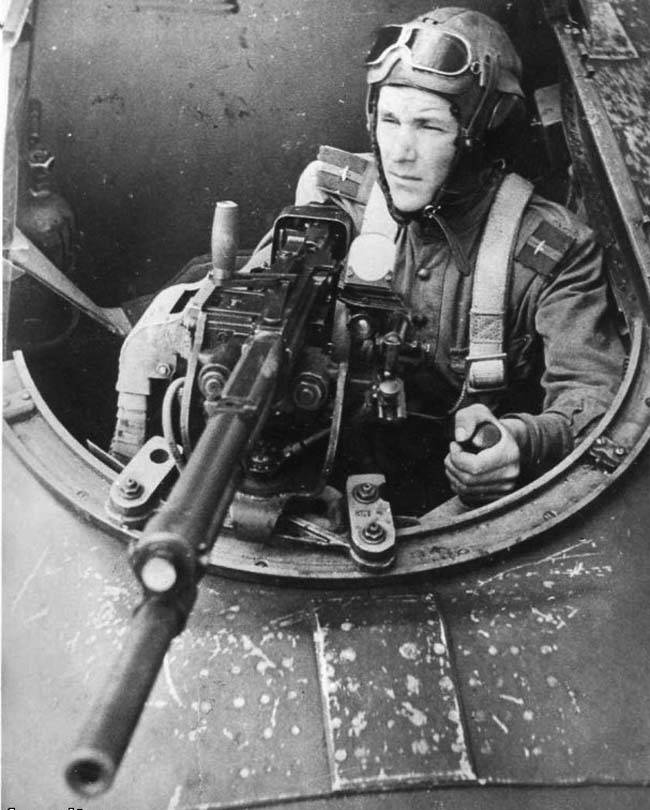
In general, the machine gun was younger than many classmates. BS (Synchronous Berezin) was adopted by 13 April 1939. And, boldly emphasize, the machine gun did not HAVE an infantry / land analogue. That is, it was created as a large-caliber aviation machine gun.
The designer of the machine gun, Mikhail Evgenievich Berezin, really created one of the weapon masterpieces that we can be justly proud of. And considering that the machine gun was the first work of a young designer at that time, it remains only to express the deepest regret that Mikhail Evgenievich lived so little.
Like a BS machine gun was just gorgeous. Good durability and reliability of automatics are noted. The advantage was the excellent rate of fire for 1000 rds / min for a large-caliber machine gun, which, we note, fell to 700-800 rds / min when working with a synchronizer.
Foreign analogues often with 800 rds / min just started a conversation.
And the important moment was the cartridge 12,7х108 mm. Very powerful and with very good ballistics. Add to this the rate of fire and we obtain at the output that, by the mass of the volley, the Berezin machine gun exceeded many 20-mm air guns of that time.
UB is Universal Berezina, although it can be called improved. The machine gun was immediately created in three different versions, which varied depending on the installation location: synchronous - UBS, wing - UBC, and turret - UBT. At the same time, the basic mechanisms and details of all three machine guns were kept identical, with the exception of the firing mechanism, which introduced some changes related to the specifics of the use of this weapon. In UBK and UBS, the outdated cable reloading mechanical scheme was replaced by a pneumatic one, for which purpose a pneumatic cylinder was placed above the venting tube.
It was the first Soviet aviation machine gun in which the pneumatic reloading system was implemented, greatly facilitating the life of the pilot and the operation of the machine gun in combat conditions. In total, over 150 thousands of these machine guns were produced.
It is clear that the UB was the only Soviet heavy machine gun in aviation. It was installed on almost all aircraft of the Red Army Air Force, the question was only in quantity. Maximum - 3 put on the MiG-3, fighters Yakovlev had 1-2 machine guns.
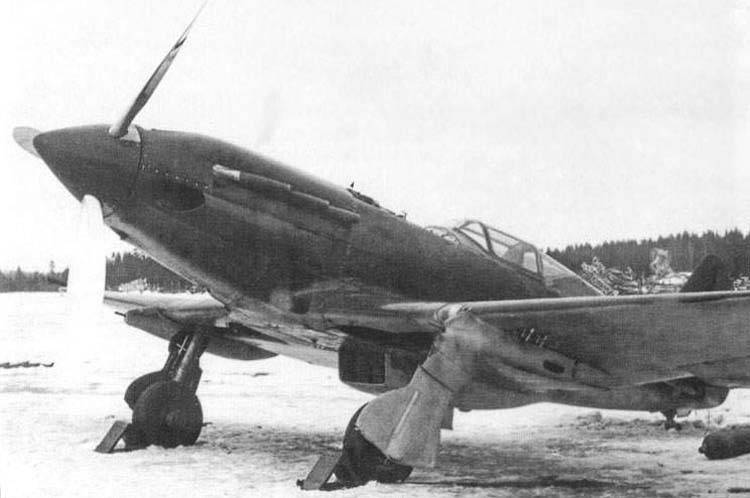
Naturally, UB turrets formed the basis of defensive weapons on Il-4, Tu-2, Ep-2, Ap-2, Pe-2, Il-2 bombers. UBK replaced the standard weapons "Boston" and "Hurricane".
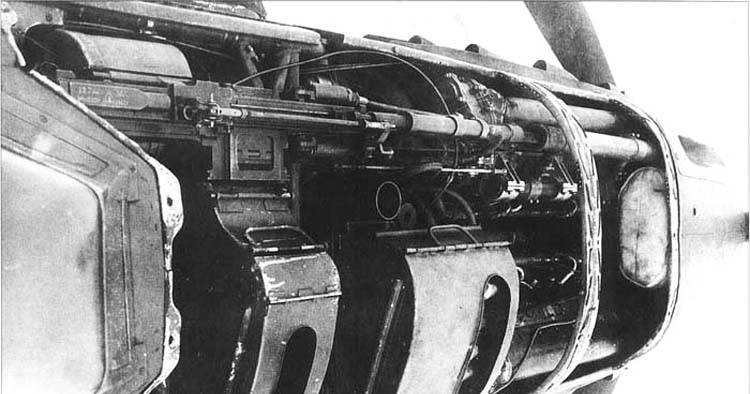
If you compare the UB with the classic Browning machine gun AN / M2, which formed the basis of the weapons of Allied aviation, it is worth saying that the American was inferior, surpassing only in advertising. Moreover, it was inferior in almost everything: at the rate of firing at 24%, in kinetic energy at the muzzle cut at 15%, at the mass of a second salvo almost one and a half times. And Browning was heavier on 8 kg. The only parameter where the American was stronger is the initial speed of the bullet. But this 1% can not be considered such an advantage, if in our opinion.
Yes, and with the other colleagues in the shop is not easy to compare. More precisely, if we take MG-131, "Breda-SAFAT", then the superiority of the Soviet machine gun can be described as overwhelming.
The only machine gun that could somehow catch up with the UB was the Japanese "Type 3", that is, the American "Browning", sharpened under the heavier French cartridge 13,2-mm.
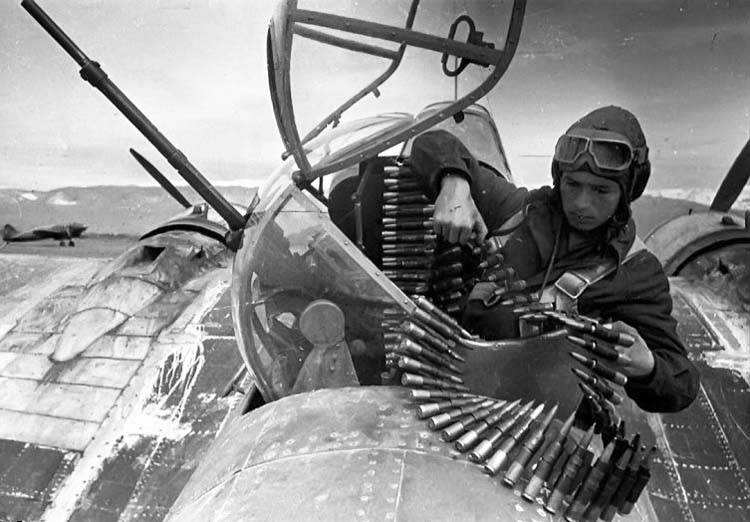
Advantages: a good layout and a simple device mechanism, simple loading and unloading, high rate of fire.
Disadvantages: cable reloading in turret versions, small unification of parts.
It was strictly forbidden to all manuals while simultaneously disassembling several machine guns to mix their parts.
7. Browning 0.50 AN / M2. USA
Unlike the army heavy machine guns that appeared in the early 20-s, the Americans were busy with the aviation over 10 years. And as a result, the 12,7-mm machine gun appeared in the 1932 year.

But in the end, a single machine gun was developed for the army, aviation and navy. Moreover, a very innovative, as they say. Innovation consisted in the appearance of a universal tape receiver, which worked both on the left and on the right side, with a single working mechanism, and an easily-interchangeable barrel. Also, the aircraft version of the machine gun received a lightweight barrel.
By the end of 30's, the .50 Browning AN / M2 machine gun became the main component of US aircraft weapons, displacing the 7,62-mm version.
The war confirmed the fairly high fighting qualities of the machine gun. American fighters armed with Browning fought everywhere, from North Africa to the islands in the Pacific. Well, what a difficult opponent for the Germans were building "fortresses", bristling with all the same "Browning", can not be said.
Browning aircraft machine guns proved to be unpretentious, reliable, convenient, combining sufficient power of ammunition and density of fire products.
Americans consider their ".50 Browning AN / M2" the best small arms, rising to the sky of that war. And one of the proofs was the fact that the machine gun was copied with pleasure by both allies and opponents.
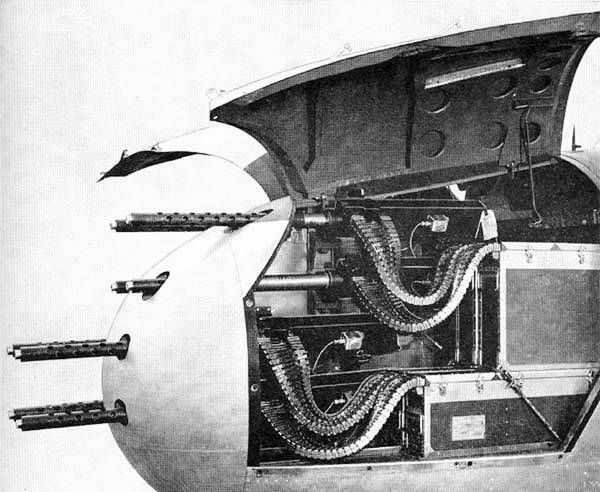
The British generally spat on the development of their weapons systems and began to arm themselves with Browning.
In general, the machine gun was good, but in fact - the golden mean. Among the majority of world samples, he looked quite ordinary, standing out, perhaps, with excellent ballistics.
There were also nuances of the type of too rigid cartridge tape from all-metal links. Excessive rigidity led to distortions of cartridges in the receiver and jamming of the entire system at large angles of the tape. In the early models of the P-40 and P-51, we had to completely redesign the design of the wing batteries, rearranging the machine guns vertically without breaking the ribbon.
Performance characteristics of rating participants:
Sources:
Yevgeny Aranov. Browning aircraft machine guns.
Yevgeny Aranov. Aircraft weapons of the Red Army Air Force.
Yevgeny Aranov. Aircraft weapons of France.
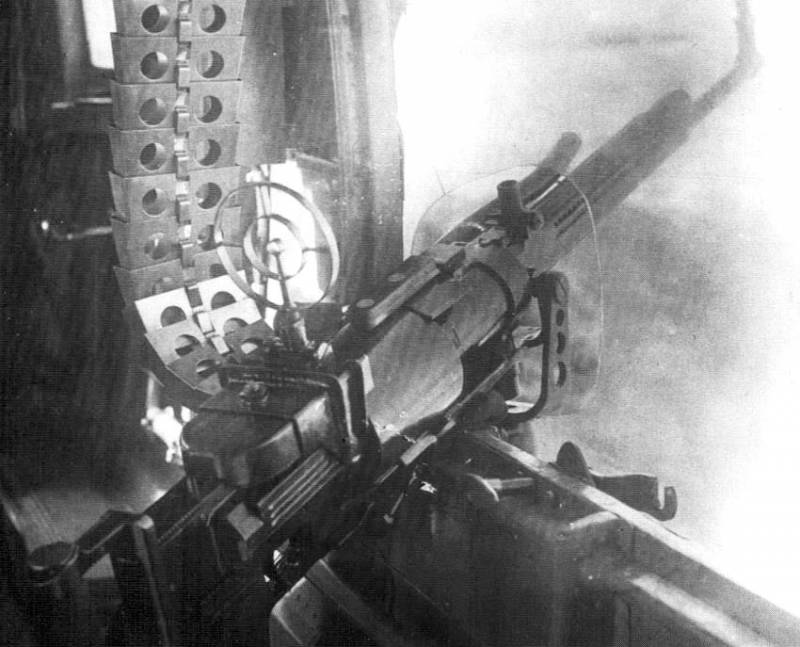

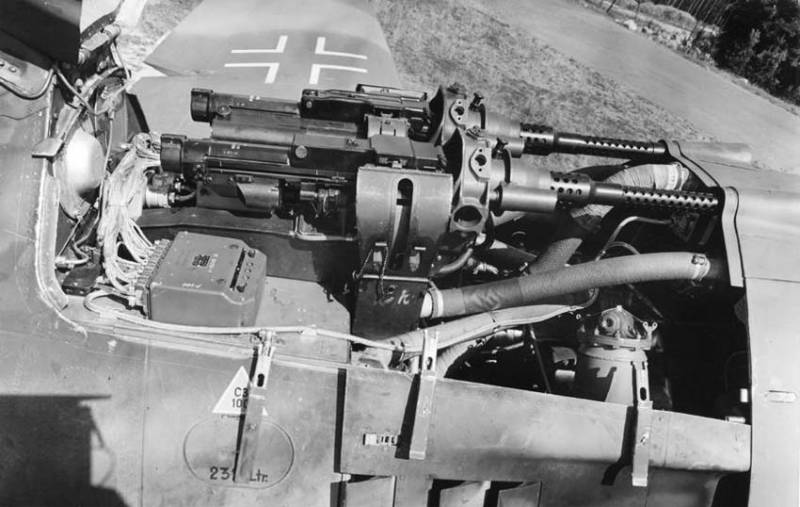
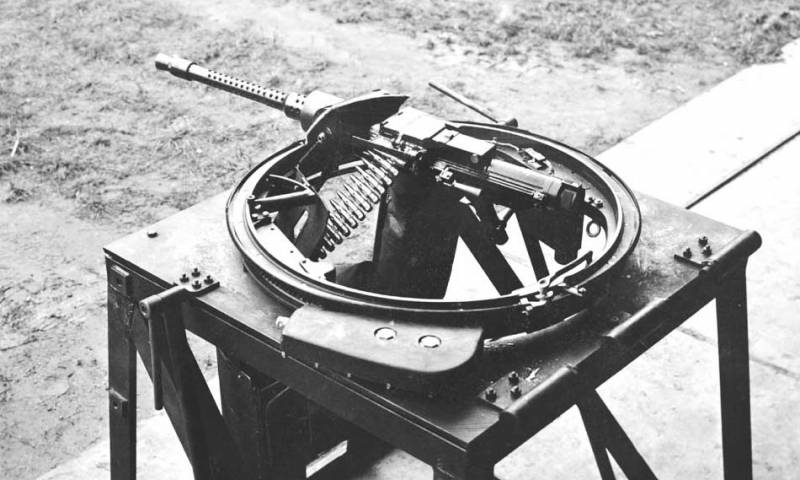


Information